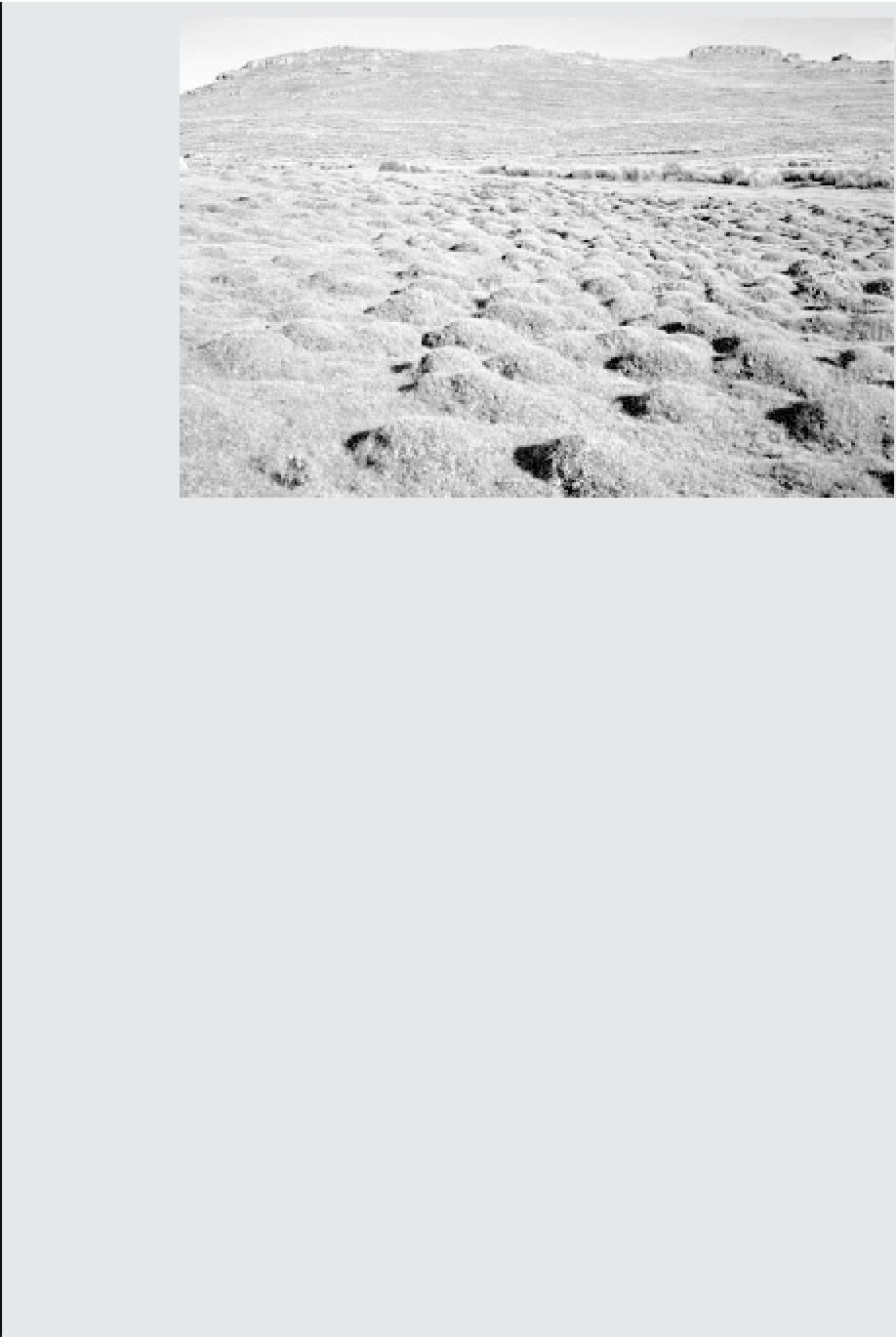Geology Reference
In-Depth Information
Plate 11.4
Earth hummocks, Drakensberg, Lesotho.
(
Photograph by Stefan Grab
)
surface materials. Earth hummocks occur mainly in
polar and subpolar regions, but examples are known
from alpine environments. They are present and peri-
odically active in the alpine Mohlesi Valley of Lesotho,
southern Africa (Grab 1994, 2005) (Plate 11.4).
Stripes
Stripes, which are not confined to periglacial environ-
ments, tend to develop on steeper slopes than steps.
Sorted stripes
are composed of alternating stripes
of coarse and fine material downslope (Plate 11.3b).
Sorted stripes at High Pike in the northern English
Lake District occur at 658 m on a scree with an aspect
of 275
◦
and a slope angle of 17-18
◦
(Warburton
and Caine 1999). These stripes are formed at a
relatively low altitude, possibly because the scree
has a large proportion of fine material suscepti-
ble to frost action and is free of vegetation. The
sorted stripes are still active.
Non-sorted stripes
are marked by lines of vegetation lying in slight
troughs with bare soil on the intervening slight ridges
(Plate 11.5).
Steps
Steps are terrace-like landforms that occur on fairly
steep slopes. They develop from circles, polygons, and
nets, and run either parallel to hillside contours or
become elongated downslope to create lobate forms.
In
unsorted steps
, the rise of the step is well vege-
tated and the tread is bare. In
sorted steps
, the step
is edged with larger stones. The lobate varieties are
called
stone garlands
. No step forms are limited to
permafrost environments.

